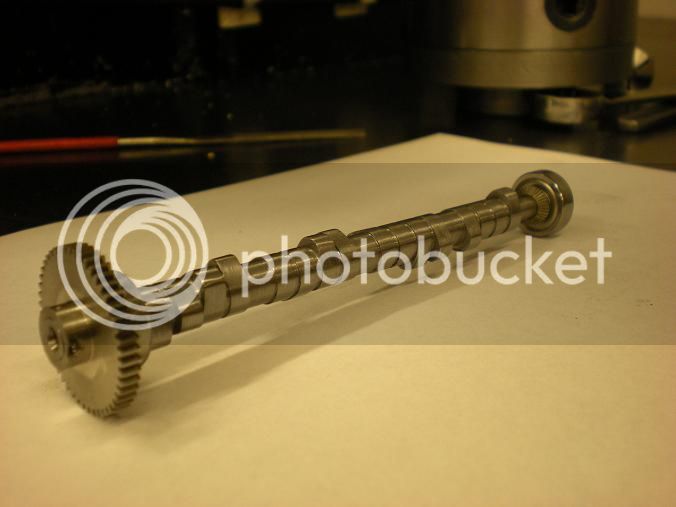Putt-Rite
Well-Known Member
Can somebody point me in the direction on the subject of how cams are made (no cnc or anything like that) using common machine shop tools?


.you should find all your answer here
For a simple 1 lobe cam I just machine a blank to the major diameter of the cam,with the required shaft size in the centre. Then mount the blank in the rotary table / dividing head and mill a flat down as if I was going to reduce the blank to the minor diameter of the cam. So if the major diameter was 20mm and the minor was 15mm, I'd mill down a flat 2.5mm deep and lock the quill at that. Then simply rotate the blank 10 degrees or so, mill it and repeat. Eventually you'll have milled away everything except your lobe (the red bit in the shocking drawing below is what's removed), in a series of small steps that are easily blended with a file.
There are many other ways, and more experienced builders will post their methods I'm sure, but this is how I've been doing it.
Hi Cogsy, thanks seems quite straight forward. Now the mental planning can begin. Do you think EN36 is the right material for camshafts ? I happen to have it available..



if I read it correctly, any overlap between 0 and 30 deg will run, in fact, the more overlap, the better.
Enter your email address to join: